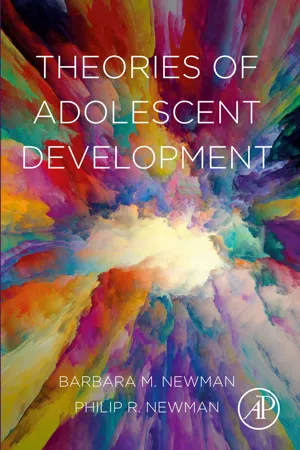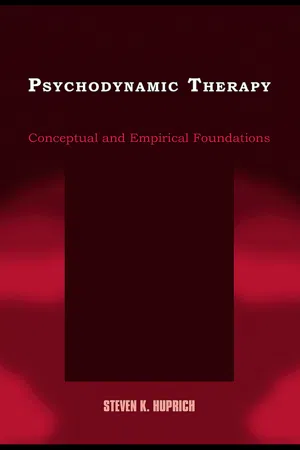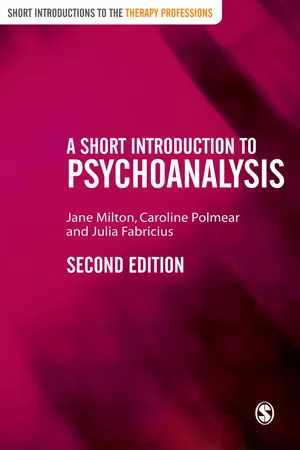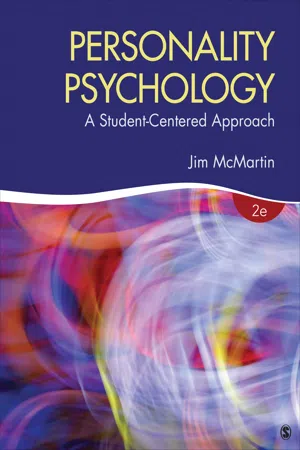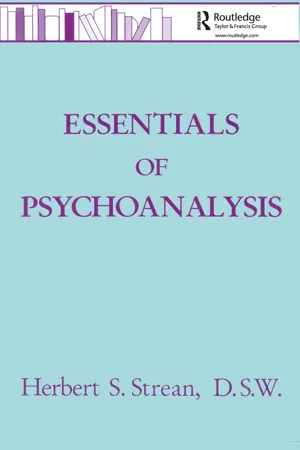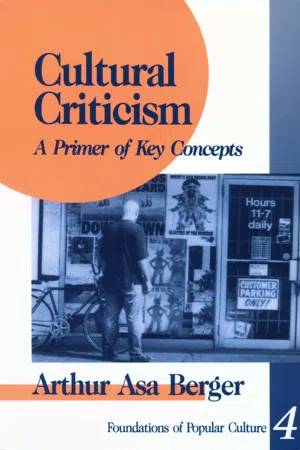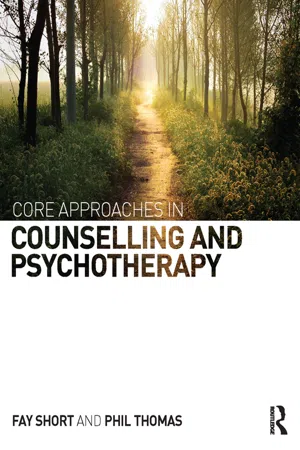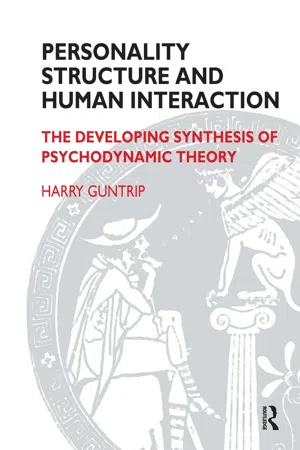Psychology
Psychoanalytic Theory of Personality
The Psychoanalytic Theory of Personality, developed by Sigmund Freud, suggests that human behavior is influenced by unconscious drives and conflicts. It emphasizes the role of early childhood experiences and the interplay between the id, ego, and superego in shaping personality. This theory has had a significant impact on the field of psychology, particularly in understanding the complexities of human behavior and personality development.
Written by Perlego with AI-assistance
Related key terms
11 Key excerpts on "Psychoanalytic Theory of Personality"
- Nancy Fenton, Jessica Flitter(Authors)
- 2015(Publication Date)
- Research & Education Association(Publisher)
Psychodynamic theories continue to emphasize the importance of the unconscious and childhood experiences, but those working from these theories disagree with Freud’s emphasis on sexual drives in determining personality. It includes an increased focus on conscious influences, social interaction, and culture in the development of personality and how development continues across the lifespan.STUDY TIPBe able to differentiate between the psychoanalytic and psychodynamic theories of personality development.• Thepsychoanalytic theory of personality was proposed by Sigmund Freud and focuses on how unresolved, unconscious conflicts and sexual and aggressive drives influence personality.• Thepsychodynamictheory of personality includes several theories developed by Freud’s followers, who also emphasize the importance of childhood and the unconscious. However, psychodynamic theories downplay Freud’s emphasis on the importance of aggressive and sexual impulses and focus instead on social and cultural influences in childhood.Carl Jung , one of the most influential neo-Freudians, found it difficult to accept that sexual motives were the chief force driving human behavior. He discussed forces and content within the unconscious, unlike anything Freud had ever mentioned. Where Freud was concerned with biology, Jung was interested in the spirit. Jung began to explore universal symbols of the human race’s experiences, symbols that transcend the individual’s immediate concerns. In his theory of personality structure, Jung wrote of both a personal and collective unconscious. The personal unconscious of each individual is very similar to what Freud called the unconscious and contains an individual’s painful or upsetting memories and information that has been repressed. Jung differed from Freud in his belief that individuals also share a collective unconscious , or a set of inherited images and experiences common to all humans throughout evolutionary time. The images that comprise the collective unconscious are called archetypes and allow individuals to respond universally to particular situations. Archetypes are evident in art and literature; common examples include the wise old man, the mother, the hero, and the quest. Two of the archetypes Jung mentions frequently are the shadow and the persona. The shadow represents the “dark side” of all humans. The persona is described as a front or mask that a person presents to other people; this mask is shown to the outside world when an individual is acting out a role from the collective unconscious. In addition to the collective unconscious and its components, one of the most influential aspects of Jung’s personality theory is the identification of several personality types based on general attitudes and perceptions of the world. In particular, Jung suggested that extroversion and introversion represent two important differences among the personalities of individuals. An extroverted personality is expressed by individuals who are confident, social, and externally focused. Conversely, an introverted- eBook - ePub
- Barbara M. Newman, Philip R. Newman(Authors)
- 2020(Publication Date)
- Academic Press(Publisher)
Delgado, 2008 ):- 1. The central importance of the unconscious in mental functioning
- 2. Recognition of the symbolic meaning of behaviors, including the symbolic meaning of symptoms
- 3. The existence of internalized unconscious conflicts
- 4. The belief that transference-based thought and behavior are critical for understanding these conflicts
Even contemporary approaches to psychotherapy that do not adhere to a traditional psychoanalytic model of therapy apply certain basic concepts from Freud’s approach including an assumption of unconscious motivation, defense mechanisms, resistance, and transference (Safran, 2012 ).According to psychoanalytic theory, parenting and the quality of parent-child interactions are the basic contexts for determining the person’s ability to manage impulses, get along with others, establish adaptive or maladaptive behavior patterns, and experience anxiety, guilt, or self-confidence and self-esteem. In psychoanalytic theory, one’s primary caregivers (e.g., parent, parents, or guardians) are the most important people in the child’s social environment. They are the primary love objects. They are also a primary source of fear through their real or imagined retaliation for the expression of unacceptable wishes. Adolescents’ ideas about the acceptability of various forms of drive satisfaction are thought to originate from the way parents react to their child’s pleasure-seeking behaviors. Through identification with parents or other close caregivers, adolescents incorporate the social standards and moral principles of their community. As part of the second individuation process, adolescents may experience feelings of anxiety as they reexamine or abandon some of these internalized standards. With the reawakening of the dynamics of the Oedipal or Electra conflicts that accompany puberty, adolescents face new and intense sexual and aggressive impulses that challenge their established coping and defensive strategies. Exploration of the adolescent’s fantasy life, imagination, and preoccupation with invented video, television, literary, or gaming scenarios provide a context for understanding the expression and gratification of these drives. - eBook - ePub
Psychodynamic Therapy
Conceptual and Empirical Foundations
- Steven K. Huprich(Author)
- 2010(Publication Date)
- Routledge(Publisher)
Section I Theoretical UnderpinningsPassage contains an image
2Basic Principles of Psychoanalytic and Psychodynamic Theory
Although psychoanalytic theory and its implication for treatment have evolved substantially over time (Frank, 2000; Kernberg, 1993; Marcus, 1999; Pine, 1998; Rangell, 1981; Wallerstein, 1989, 2002), certain principles remain as guiding elements as part of any discussion of psychoanalytic or psychodynamic psychotherapy. As noted in Chapter 1 , these are summarized by Westen (1998, pp. 334–335):1. Much of mental life—including thoughts, feelings, and motives— is unconscious, which means that people can behave in ways or develop symptoms that are inexplicable to themselves.2. Mental processes, including affective and motivational processes, operate in parallel so that, toward the same person or situation, individuals can have conflicting feelings that motivate them in opposing ways and oft en lead to compromise solutions.3. Stable personality patterns begin to form in childhood, and childhood experiences play an important role in personality development, particularly in shaping the ways people form later social relationships.4. Mental representations of the self, others, and relationships guide people’s interactions with others and influence the ways they become psychologically symptomatic. 5. Personality development involves not only learning to regulate sexual and aggressive feelings but also moving from an immature, socially dependent state to a mature, interdependent state.It is perhaps these five principles that best distinguish psychodynamic and psychoanalytic psychotherapy from other forms of treatment that are commonly practiced today, which focus mainly on conscious cognitions, behavior change, and symptom reduction. Psychotherapy process also is part of psychoanalytic and psychodynamic theory, unlike many of the common therapies espoused to be empirically superior. Issues of how the patient responds to the therapist, how the therapist responds to the patient, how and when a person resists a particular topic of investigation, and how all these processes change in the course of the session are part of understanding and conducting sound psychodynamic and psychoanalytic treatment. - eBook - ePub
Clinical Psychology
The Study of Personality and Behavior
- Max Gluckman(Author)
- 2017(Publication Date)
- Routledge(Publisher)
At the present time there are a variety of personality theories that have been developed to describe and explain human behavior. All but a very few of them have been derived from particular settings and contexts, from work with different populations, and thus have tended to emphasize somewhat circumscribed features of human functioning. The backgrounds and disciplines of the individuals who have developed these theories have also varied and, as might be anticipated, so have their concepts and terminology. Fairly comprehensive summaries of these theoretical views are available in several books and can be consulted by the interested reader (Bischof, 1970; Hall and Lindzey, 1970; Maddi, 1968; Mehrabian, 1968; Sahakian, 1965; Wepman and Heine, 1963). In the present chapter we shall only survey some of these viewpoints. Those to be presented have been selected to illustrate the diversity that exists, as well as being orientations which appear to be of more than passing significance as far as clinical psychology is concerned. Furthermore, the point of emphasis will be to illuminate the significance or relevance of the theory for clinical operations, rather than to provide a comprehensive presentation of the theory itself.Psychoanalytic Theory
Probably the most influential theory of personality developed thus far has been the psychoanalytic system developed by Sigmund Freud (1938a, 1949). Freud, who was born in 1856 and died in 1939, was trained as a physician. He had an interest in neurology and thus was concerned with the treatment of “nervous disorders.” Among the patients in his medical practice in Vienna, he was particularly attracted to the problems of neurotic individuals who exhibited dramatic symptoms for which no organic basis could be found. It was primarily as a result of this experience that Freud developed his theory of unconscious motivation and his conceptions of personality development. In other words, it was as a practicing clinician working with a particular sample of disturbed people that Freud drew his observations, derived his hypotheses, and eventually formulated his theoretical ideas.While the Freudian system is a fairly complex one, we need only be concerned here with some of his main ideas which are particularly important for such matters as clinical diagnosis and therapy. One such view was the concept of psychic determinism. Influenced strongly by the deterministic and positivistic views of nineteenth-century science, Freud felt that all behavior has some cause or source of motivation. According to him, nothing happens by chance, and even such occurrences as common mistakes, accidents or forgetting are not happenstance; rather, there is a specific psychological cause for such events, even though we are not usually aware of them. In his Psychopathology of Everyday Life - eBook - ePub
- Jane Milton, Caroline Polmear, Julia Fabricius(Authors)
- 2011(Publication Date)
- SAGE Publications Ltd(Publisher)
2 BASICS OF PSYCHOANALYTIC THEORY Psychoanalysis is a branch of psychology particularly concerned with subjective experience. It has three aspects. First, it is a body of knowledge about the mind, which has been discovered partly through the sort of work described in the previous chapter and partly through studying ordinary human phenomena such as dreams, slips (like slips of the tongue) and jokes. Second, the word ‘psychoanalysis’ refers to a method for investigating the mind. Third, psychoanalysis refers to a form of psychotherapeutic treatment. Psychoanalysis takes a dynamic rather than a static view of the mind, seeing movement, energy and in particular conflict as intrinsic to mental life. For example, a person may want to do something his or her conscience doesn’t allow, or may be pulled in different ways by love and hate for the same person. He or she may want to know the truth but also be frightened and reluctant to find out. Central to psychoanalytic theory is the idea that much of our mental life is unconscious. Unconscious thoughts, feelings and wishes form the mental bedrock, with conscious experience the tip of the iceberg. Unconscious processes cannot, by definition, be known directly but have to be inferred by their effects, analogous to the powerful but invisible effect of gravity. Psychoanalytic theory offers a developmental perspective. Although there are a number of partly overlapping and sometimes conflicting psychoanalytic theories of development, all emphasise the formative effect of early relationships. Early experience is seen as interacting with innate endowment in determining the way the mind forms. Normal development involves acquiring an increasingly clear and stable sense of self, and an increasing capacity to relate to others as separate and unique - eBook - ePub
Personality Psychology
A Student-Centered Approach
- James (Jim) A. McMartin(Author)
- 2016(Publication Date)
- SAGE Publications, Inc(Publisher)
As you read this text, consider how the five major theoretical approaches compare on the preceding criteria for evaluating scientific theories. More importantly, consider how these theories relate to your own life. To what extent do they help you create a better understanding of your own personality?Now that we have a basic background in the nature of scientific theories, we present an overview of five theoretical approaches to personality. The purpose of the overview is to give you an idea of which personality variables the theory considers to be especially important. Each theory will also be covered in greater detail in later chapters.Five Personality Theories
The Psychodynamic Orientation
Principal Theorists: Sigmund Freud- Alfred Adler
- Carl Jung
- Karen Horney
- Erik Erikson
- John Bowlby
The psychodynamic orientation to personality stresses the importance of unconscious components in the human psyche or mind and the relationship of the unconscious to the conscious or aware part of the mind. Psychodynamic is an umbrella term that connotes any theory that values the role of the unconscious in determining human personality. Sigmund Freud began this approach at the end of the 19th century. Subsequently, many individual theorists, only a few of whom can be given space in this book, created their own unique versions, each with a new name to distinguish their theories from Freud’s psychoanalysis. Thus Freud is our first guide in our journey to the mysterious inner recesses of the mind.Sigmund Freud
The “father” of modern personality theory, Sigmund Freud (1856–1939), first used the term psychoanalysis in 1895 in his Studies on Hysteria, coauthored with Josef Breuer (Clark, 1980).Psychoanalysis today has three distinct meanings. It may refer to a process of psychotherapy, a general theory of personality, and a research method - eBook - ePub
- Sarah Sifers(Author)
- 2011(Publication Date)
- Collins Reference(Publisher)
Although, as The History of the Problem of Abnormal Behavior suggests, early indications of a psychodynamic approach to abnormal behavior began to appear in the late nineteenth and early twentieth centuries, the full sweep of the perspective comes out of the clinical practice and writings of Sigmund Freud, whose work began in the latter half of the nineteenth century and ended in 1939. His profound contributions have been extended and modified by early disciples and thereafter by neo-Freudians and by ego psychologists.Basic Concepts of the Psychodynamic Perspective
Key to an understanding of the perspective is an understanding of the word psychodynamic. From the dictionary comes this definition: “the interaction of various conscious and unconscious mental or emotional processes, especially as they influence personality, behavior, and attitudes” (American Heritage Dictionary, 2004).Psychoanalysts and other psychodynamic theorists typically specify that definition to include the importance of early life experiences in determining adult characteristics.Almost universally, members of the psychodynamic school identify three basic concepts underlying the psychodynamic perspective: psychic determinism, unconscious motivation, and the role of childhood experiences.Psychic Determinism
Psychodynamic theorists believe that although we have a sense of freely choosing what we will think about, desire, and do, much of our behavior actually is determined for us or at least strongly influenced by earlier life experiences.Unconscious Motivations
Motivational forces operate, to a considerable degree, at an unconscious or, at most, preconscious level. The psychodynamic theorists hold that the full basis for significant behavior, especially for motivation, is largely unknown to the affected individual. This belief significantly influences psychotherapeutic techniques, which are discussed in Psychodynamic Forms of Psychotherapy.Childhood Experiences
The individual is most vulnerable to influences from the environment during the early years of life. For these reasons, most, but not all, psychodynamic thinkers believe that critical dynamic forces influential throughout the lifespan of the individual are developed during the early years of childhood. This principle of the psychodynamic perspective also has an important influence on treatment approaches, especially on psychoanalytically oriented treatment. - eBook - ePub
- Herbert S. Strean(Author)
- 2013(Publication Date)
- Routledge(Publisher)
Basic to understanding it is the notion of psychic determinism (Freud, 1939). This principle holds that in mental functioning nothing happens by chance. Everything a person feels, thinks, fantasizes, dreams, and does has a psychological motive. How individuals earn a living, whom they choose to love and marry, whom they hate, the quality and quantity of their attachments are all motivated by inner unconscious forces (Freud, 1905). Although external factors are always impinging on the human being, the notions of psychic determinism and the unconscious help the mental health professional appreciate that the behaviors of individuals, couples, families, groups, institutions, and societies are not only reactions to situational variables but are also influenced and shaped by instinctual wishes, ego functions such as defenses and superego admonitions, and other idiosyncratic, internal forces. For example, two individuals working in the same plant are both fired the same day. One of them can become anxious, depressed, and suicidal while the other can feel relieved, pleased, and welcome a respite from working. The reasons for these two different responses are complex and are influenced in part by the individual's history, fantasy and dream life, self-image, and other ego functions, superego mandates, transferences toward bosses and peers, and a host of other internal factors. A psychoanalytic perspective with its emphasis on determinism and the unconscious can help the clinician gain a better understanding of the patient's presenting problems. For example, when a prospective patient complains about a rejecting spouse or a disturbed son or daughter, a psychoanalytic perspective suggests that the complainer is deriving unconscious protection and gratification from his or her complaints - eBook - ePub
Cultural Criticism
A Primer of Key Concepts
- Arthur A, Berger(Authors)
- 1994(Publication Date)
- SAGE Publications, Inc(Publisher)
Sigmund Freud5
Psychoanalytic Theory and Cultural Criticism
In this chapter I will explain a number of the fundamental conceptions found in psychoanalytic theory, which is one of the most important methodologies used by cultural critics. My focus will be on the ideas of Sigmund Freud, but I will also deal with a number of concepts associated with Jungian analysis.Psychoanalytic theory is, it must be said, extremely controversial; there are some scholars and critics who feel that Freudian, Jungian, and other psychoanalytic theories are absurd and have no relevance either to human beings or to cultural phenomena. On the other hand, Freudian thought, along with Jungian thought and the ideas of numerous other psychoanalytic thinkers, is used by a significant number of cultural critics and seems to have a number of interesting things to say about texts, media, popular culture, and related matters. Many observers, including poet W. H. Auden, have noted that Freudian thought is so pervasive in Western societies that many people use Freud’s ideas without even recognizing that they come from Freud or from thinkers associated with him. With that in mind, let us examine some of Freud’s more important ideas.The Unconscious
One of Freud’s most fundamental ideas involves the notion that the psyche has a number of different levels or systems of awareness: consciousness, preconsciousness, and the unconscious. This is known as Freud’s topographic hypothesis. In L. Hinsie and R. J. Campbell’s Psychiatric Dictionary (1970) these systems are differentiated. Consciousness refers, generally speaking, to what we are aware of. It is a “proportionately infinitesimal” part of the psyche. The other two levels are described as follows:preconscious . . . in psychoanalysis, one of the three topographical divisions of the psyche. . . . The preconscious division includes thought, memories and similar mental elements which although not conscious at the moment, can readily be brought into consciousness . . . by an effort of attention. This is in contrast to the unconscious . . . division, whose elements are barred from access to consciousness by some intrapsychic force such as repression, (p. 585) - eBook - ePub
- Fay Short, Phil Thomas(Authors)
- 2014(Publication Date)
- Routledge(Publisher)
Adler establish his own psychodynamic theories based on a holistic approach to the person ‘Individual psychology’ is the Adlerian school of psychodynamic theoryPractice and Theory of Individual Psychology published in 1927Alongside the development of these alternative branches of psychodynamic theory (Adlerian and Jungian), work continued on classic Freudian theory Melanie Klein developed object relations theory in Britain after applying psychoanalysis to work with young childrenThe Psycho-Analysis of Children published in 1932Anna Freud developed the concept of ego defence mechanisms and outlined how these are used in both beneficial and damaging waysThe Ego and the Mechanisms of Defence published in 1936Both Klein and Freud worked in London using psychoanalysis with young children, and this overlap in activity but difference in perspective brought them into conflict Eventually, each established her own branch of psychoanalysis, and training in the UK today is predominantly Kleinian whereas training in the US today is predominantly FreudianErikson devised an alternative set of developmental stages as a framework for psychoanalysis and this moved the theory away from infantile sexuality to focus on other aspects of human development (thus making it more acceptable to many academics)Childhood and Society published in 1950 and revised in 1963Horney presented a less male-oriented view of psychoanalysis, incorporating a new theory of self and a deep understanding of neurosis Neurosis and Human Growth - eBook - ePub
Personality Structure and Human Interaction
The Developing Synthesis of Psychodynamic Theory
- Harry Y. Guntrip(Author)
- 2018(Publication Date)
- Routledge(Publisher)
psycho dynamic analysis of the development of the personality in and through the medium of personal relationships. In 1898, however, he effected a compromise which arose naturally out of his medical work and his involvement with the bodily symptoms of neurosis. He replaced 'neurones' by 'instincts' and the physiology of the brain and nervous system by the bio-chemistry and the phasic development and maturation of the sexual component instincts. This, however, did not enable him to achieve a true psychodynamic theory of the personality as distinct from a dynamic metapsychology, and he made another new development of theory in the 1920s.Freud approached the 'human being in his personal life' with the training and mentality of the natural scientist. Writing of the theory of the mind that Freud expounded in the seventh chapter of The Interpretation of Dreams, Jones says:He probably never recognized the extent to which his later ego-psychology was a new departure. It is easier for us to see this now that his work has had its effect.Freud still uses the word 'Apparatus' and the model he provides is constructed on lines very similar to those of the physiological model. (Ibid., p. 437.)2. The Philosophy of ScienceThe question 'Process theory or Personal theory' involves some deeper problems that belong in the end to philosophy, the philosophy of science. Freud frequently expressed a hostile attitude to philosophy and religion, both of which he regarded as 'nothing but' purely speculative attempts to evolve a set of beliefs primarily designed to serve as a basis for personal security, and representing nothing but wishful thinking. Philosophy and theology were to him intellectualized forms of the phantasy life, aiming at the creation of a Weltanschauung, a comprehensive view of the universe by the aid of which the thinker can feel defended against uncertainty and insecurity. It is true that philosophers from Plato to Hegel and the Subjective Idealists devoted much energy to the construction of such theories of the entire universe, but they did much else besides that, such as defining the major problems for thought, refining and clarifying the definition of terms, and seeking a synoptic point of view arising out of a synthesis of the knowledge available at the time without any claim to finality. Freud's approach to philosophy was hindered by an emotional prejudice as is shown by the language and tone of his reference to it in Inhibitions, Symptoms and Anxiety
Learn about this page
Index pages curate the most relevant extracts from our library of academic textbooks. They’ve been created using an in-house natural language model (NLM), each adding context and meaning to key research topics.

